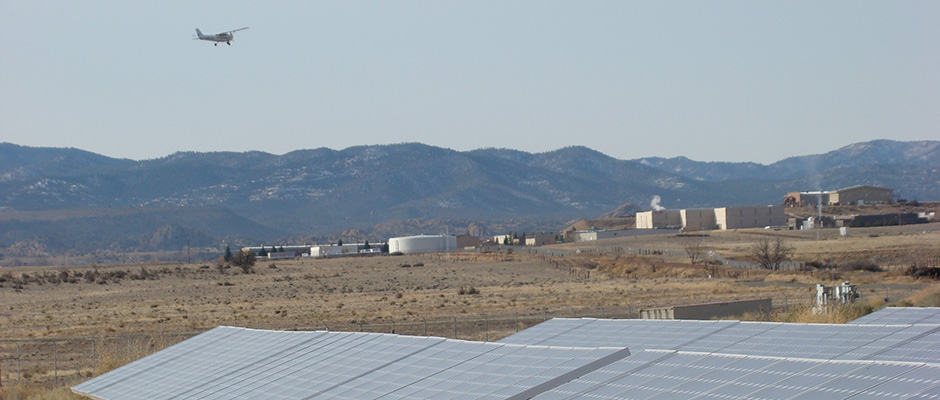Share this article
Solar Arrays at Airports: Do they increase birdstrike risks?
Which is riskier for airports— a solar array or a grassy field? To better understand how the land around airports might affect the risk of bird-aircraft collisions, USDA Wildlife Services’ National Wildlife Research Center (NWRC) researchers and partners recently compared bird use at solar arrays and grasslands at airports in Arizona, Colorado, and Ohio.
The average commercial airport in the contiguous United States is approximately 2,000 acres. About 39 percent of that area is covered by grasses. However, few studies have evaluated the economics and safety of these grasses relative to other types of land cover. Managed turf grasses are expensive to maintain and can attract wildlife hazardous to aircraft, such as Canada geese, gulls, and large flocks of European starlings. An attractive alternative to turf grasses on some portions of airport properties is land cover that attracts fewer wildlife and generates income instead of consuming airport resources. Installing sets of solar panels (solar arrays) is one alternative land cover option.
Although study results showed higher numbers of birds in the areas with solar arrays than in the grasslands, those birds seen (such as horned larks, house finches, and mourning doves) represented fewer and less hazardous species than those in the grasslands. Overall, researchers observed 37 species of birds in the areas with solar arrays compared to 46 in the grasslands. The results suggest that even though birds were found in areas with solar arrays, the number and type of birds there do not necessarily increase the risk of bird-aircraft collisions and the species observed do not conflict with safety regulations concerning wildlife at airports. Solar arrays could play a major role in efforts to design and operate “greener”—and safer—airports.
“Converting airport grasslands to solar, biofuel, or wind production may not only provide more environmentally sound alternative energy sources for our country, but also increase revenue for airports and reduce the local abundance of potentially hazardous wildlife to aircraft,” says NWRC supervisory research wildlife biologist Dr. Travis DeVault. “Such efforts may be particularly beneficial for rural economic development, as many rural airport properties contain expansive grasslands that potentially could be converted to biofuel crops or other renewable energy sources.”
Wildlife Services is a Strategic Partner of The Wildlife Society.
Header Image:
To determine whether changes in land use increase the risk of bird-aircraft collisions, NWRC researchers and collaborators studied how birds use solar arrays and adjacent airport grasslands.
Image Credit: David Bergman, USDA-Wildlife Services








